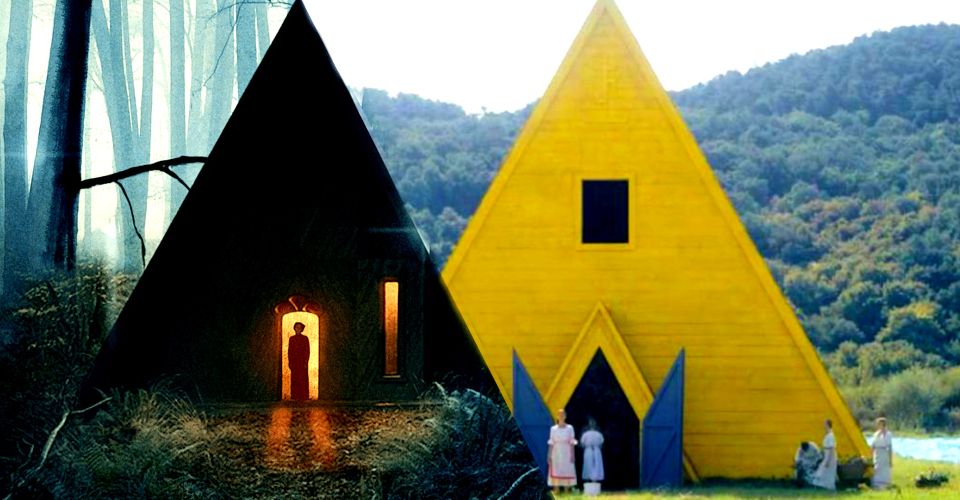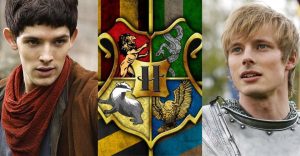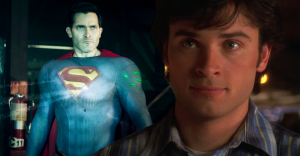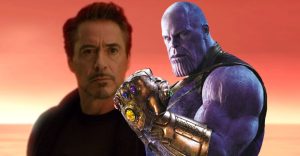Why Midsommar & Other Folk Horror Movies Use The Triangle Symbol

Among Midsommar‘s many striking images is a prominent evocation of one of folk horror’s most well-known symbols: the triangle. Horror films have a vast library of shared visual language, ranging from the grotesque to the chilling, but the unique, focused subject matter of the folk horror sub-genre has created a tradition all its own. Folk horror is multifaceted and can emphasize, among other things, nature, religion, or solitude, but in all of its aspects it subverts the pastoral, and usually a specifically European version thereof.
While the folk horror genre is certainly experiencing a renaissance at the moment (potentially in relation to the increasingly technological nature of the world), it has a storied history in film, with The Wicker Man being perhaps the best known example. While recent films like Midsommar and The Witch follow in this tradition, their return to it is all the more notable because the trends of mainstream horror in recent decades (particularly suburban teen screams) directly contrast with folk horror themes and devices.
Folk horror’s uses of the triangle symbol are manifold, but it is noteworthy that within only the past couple of years both Midsommar and Gretel & Hansel have prominently featured iconic and unsettling triangular houses. Appropriately for a genre so fixated on the past and tradition, there is no shortage of historical precedents of triangles being used to elicit this response. Most basically, there is an unavoidable sharpness that people tend to find threatening on an instinctual level. But the shape’s connotations aren’t exclusively negative, at least inherently. For instance, the triangle is significant in both historical and modern belief systems surrounding witchcraft, a force that often serves as a strawman for anxiety around sexuality, transgression, and the supernatural, all of which have become central tenets of most horror.

As folk horror usually voices a fear of the traditional, the triangle is often used thusly to represent something primeval, as it is when used in alchemical writing; it is after all the most basic polygon. Counterintuitively then, such an appeal to basic, fundamental understanding has also been used in some recent cosmic/weird/Lovecraftian horror, such as The Void, wherein triangular imagery can be seen as balancing the eldritch inscrutability of the antagonistic forces with a sense that they are in some way inevitable. Although neither folk nor cosmic horror, The Neon Demon used the shape in a similar way, to ironically undermine its decadent, over-aestheticized world.
Midsommar‘s great success has made Ari Aster’s bold use of triangles iconic, epitomizing their use in modern folk horror, but something so basic as a triangle can naturally have a huge variety of implications across different cultures and belief systems. So while the folk (and, to a lesser extent, cosmic) varieties have made the most visible use of the symbol recently, as the landscape of horror continues to broaden and diversify, there will be myriad opportunities for its meaning to be reinforced and subverted in interesting ways.

















